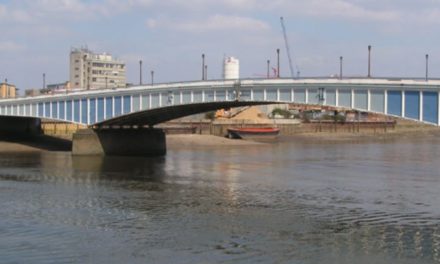London 2022 Election Briefing by James Marcou, account executive, DevComms.
A look ahead to Hillingdon
Hillingdon Council is currently under Conservative control, having won 44 out of 65 seats at the previous 2018 London elections. The Labour Party are the main opposition, controlling the remaining 21 seats. However, recent polling have conveyed Conservative seats will be keenly contested, with strong Labour support in wards traditionally considered Tory strongholds.
Hillingdon, as with all London boroughs, have all-out elections every four years. Nevertheless, the 2022 election will take place under new boundaries, resulting from the 2018/19 Local Government Boundary Commission Review. This will reduce the number of councillors from 65 to 53 and remove one electoral ward.
A new ward boundary map is provided (source: New ward boundaries – Hillingdon Council).
Hillingdon’s Planning Controversies.
Recent development issues could be central to local campaigning. Most pressingly, Hillingdon Council has been at consistent loggerheads with the Mayor of London over proposed Heathrow Airport development. The majority of Heathrow’s site, the UK’s largest airport, sits within Hillingdon’s Labour controlled Heathrow Villages ward. This has become an increasingly contentious issue within the borough, as successive London Mayors have chosen to call-in development proposals, despite sustained resistance from Conservative administrations.
Conflicts between the Conservative Hillingdon Council and the London Mayor further came to a head late in 2021. This followed protracted disputes between Hillingdon, Sadiq Khan and the Secretary of State for Transport over HS2 proposals and planned Heathrow expansions. Numerous Judicial Reviews had been requested from the Hillingdon authority and Mayor. Both parties held respective objections to Planning Inspectorate decisions over the future of these nationally important infrastructure schemes. Notably in late 2021 Hillingdon Council were twice denied judicial appeals, challenging HS2 consents over lorry routeing through the borough.
Concurrently the council were involved in a landmark planning case, where they had sought to legally challenge developments brought forth through the Mayor’s London Plan. This comprised an 11-storey mixed-used development at the former Master Brewer site. Contentions arose, as the site had not been allocated by the council as an area suitable for tall buildings. However, the council, and by consequence their planning policy, were vastly undermined upon judgement in favour of the mayor’s scheme. Subsequently, the apparent lack of robustness in the council’s authority and poor resistance to unwelcome development has diminished the Tories’ popularity.
This should be a key consideration for members standing in this year’s election. In campaigning they will likely be looking to address these issues and future plans to mitigate against perceived impacts of development introduced by the London Mayor. Some wards may even be vulnerable to a protest vote, with elections acting as a referendum on interventions in Hillingdon’s built environment.
A New Leader for Hillingdon.
The recent change of council leadership could further expose weaknesses in Hillingdon Borough Council’s Conservative administration.
Ickenham Conservative Councillor, Sir Ray Puddifoot, announced he was stepping down as the council’s long-time leader in November 2021. Cllr Puddifoot is noted as a popular figure. Having originally been elected to the borough council in 1998, Cllr Puddifoot became its leader two years later in 2000. Consequently, Cllr Puddifoot was the longest serving Hillingdon Council leader and London Borough Council leader. His absence leaves a large role to fill. If the new leader does not consolidate this significant position there is scope for Labour to exploit this visible void in leadership.
In January 2022, Eastcote & East Ruislip Conservative councillor, Ian Edwards, officially took over as leader of Hillingdon Borough Council. Upon being announced as forthcoming leader of the council, Cllr Edwards pledged his commitment to ‘putting residents first’ in terms of policy making.
However, Cllr Edwards has had to deal with controversy, along with related criticism from Labour opposition. Most recently, in March 2022, it came to light that the Council would be saved from bankruptcy by an expected agreement with the Government for up to £75 million of additional funding. This prompted intense criticism from Labour councillors, who alleged the Tory administration were currently operating with a £25m deficit. Notably Labour’s lead on finance, Cllr Tony Eginton stated:
“Though bankruptcy has been avoided, it is at the cost of £20m contributions from the council. That is £200 for each Hillingdon household”.
In that context, the Council’s Conservative administration will be seeking to avoid any such further criticism ahead of the election. Furthermore, Cllr Edwards’ rebuttal to these claims were perceived as weak. This all but confirms the feared void in council leadership anticipated by the unfortunate timing of Cllr Puddifoot’s stepping down. If Cllr Edwards does not take swift and sharp action in better consolidating his and the entire Conservative administration’s role, particularly during campaigning, the Tory’s could be on the wrong end of disappointing electoral results. Currently, the Conservatives stand the risk of looking weak from the top down.
Wards to watch:
Through analysis of 2018 London Borough election data the following Hillingdon Borough wards are identified as susceptible to changes of control.
Hillingdon’s Charville ward is currently under Conservative control, with the Tories having gained two seats from Labour in 2018. However, this was achieved by narrow margins. Conservative candidates held 49.0 per cent of the vote, giving them a slim majority over Labour’s 45.8 per cent. Charville also sits adjacent to two Labour wards, Barnhill and Botwell. This in combination with the Tories dwindling popularity could see the ward returned to Labour control.
West Drayton was also previously subject to split control. Though Labour consolidated their position in 2018, winning the remaining Conservative ward seat. This was achieved via a tight seven per cent majority, with Labour member Stuart Mathers only edging each Conservative candidate by around 100 votes. This is despite a largely young voter demographic. The closest runner outside of the main parties is the BNP’s Vincent Evans. Subsequently, if the Conservative put on a good showing and campaign well they could retake the ward from Labour.
Uxbridge South, the ward seat within Prime Minister Boris Johnson’s Westminster consistency, is presently entirely Conservative controlled. This followed the Conservatives regaining a seat from Labour in 2018. Again, this was by a narrow margin, with Tory candidates collecting 13 per cent more votes than Labour. Furthermore, the wafts of younger, Labour aligned residents now eligible to vote, put the ward at risk of being lost. Ultimately the weakness of the Tories is exemplified by their inability to look for help from Boris Johnson, the party leader, in his own backyard, as popular rhetoric currently cites the PM as no longer a useful asset for local elections.
© London West (powered by ukpropertyforums.com).
Sign up to receive your free bi-weekly London West journal here














